50 years of the 50p Our 50th year of celebration
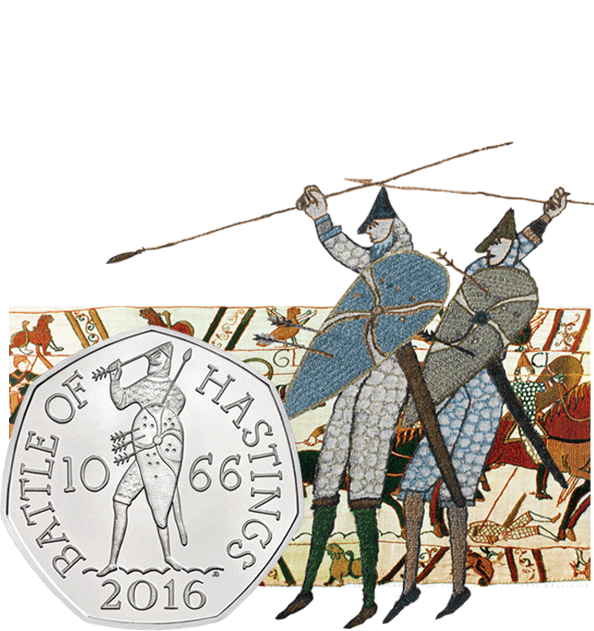
The 950th Anniversary of the Battle of Hastings
The death of Edward the Confessor plunged England into chaos. The crown passed to his kinsman Harold, but rival claimants were already plotting against him; amongst them, William Duke of Normandy. With Harold distracted in the north, William made his move. Landing near Hastings, he pillaged and burned the surrounding area, forcing Harold to march south.
The Battle of Hastings took place on 14 October 1066. Outnumbered and exhausted, Harold’s army had no choice but to fight defensively. At first, his men held their ground as waves of Norman attacks broke on the shield wall, before a false rumour spread that William was dead. Harold’s men broke ranks, leaving themselves vulnerable to counter-attack. Their defensive line fractured and the tide turned decisively against them. With the Anglo-Saxons routed and their king slain, the Norman conquest began in earnest.
The 150th Anniversary of the Victoria Cross
The award of the Victoria Cross is reserved for ‘gallantry of the highest order’. The medal’s origins can be traced to the Crimean War when journalists were in the field of a major conflict for the first time. Until then the award of medals was reserved for officers. Commanders feared ordinary soldiers would break ranks in a bid for individual glory. The reporting by war correspondents led to a clamour for change.
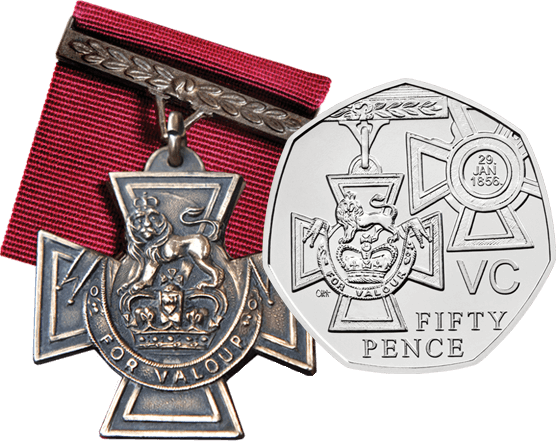

The 150th Anniversary of the Victoria Cross
The award of the Victoria Cross is reserved for ‘gallantry of the highest order’. The medal’s origins can be traced to the Crimean War when journalists were in the field of a major conflict for the first time. Until then the award of medals was reserved for officers. Commanders feared ordinary soldiers would break ranks in a bid for individual glory. The reporting by war correspondents led to a clamour for change.

The idea for the medal came to the attention of Prince Albert who, along with Queen Victoria, became a powerful supporter. Albert designed the original medal and named it after his wife. Handmade using bronze taken from a captured Crimean War cannon, the simple cross design bears the inscription ‘For Valour’. The first serviceman to earn the honour was Charles Davis Lucas serving on HMS Hecla who courageously picked up a live shell that had landed on the deck and threw it overboard.

The idea for the medal came to the attention of Prince Albert who, along with Queen Victoria, became a powerful supporter. Albert designed the original medal and named it after his wife. Handmade using bronze taken from a captured Crimean War cannon, the simple cross design bears the inscription ‘For Valour’. The first serviceman to earn the honour was Charles Davis Lucas serving on HMS Hecla who courageously picked up a live shell that had landed on the deck and threw it overboard.
The 75th Anniversary of the Battle of Britain
Throughout 1939 and 1940, the German blitzkrieg swept through Western Europe. Troops and armoured vehicles directed by radios waged lightning war. With no answer to these short concentrated attacks, countries fell like dominoes one after the other.
After the fall of France, Britain was next in Hitler’s sights. But the Royal Air Force (RAF) defied Goering’s Luftwaffe to stave off the immediate threat. Without control of the skies, Hitler was unable to launch his planned seaborne invasion – Operation Sea Lion. The first German defeat of the war would prove to be a crucial turning point.
Making good use of the world’s best radar network, unrivalled Spitfire fighter planes and squadrons of pilots supplemented by Eastern European airmen who had escaped the Nazi scourge, Britain took the fight to Germany – aided and abetted by a key tactical mistake. Provoked by the British bombing of German cities, Hitler switched his focus from strategic to civilian targets, allowing the RAF time to recover and ultimately win the battle.
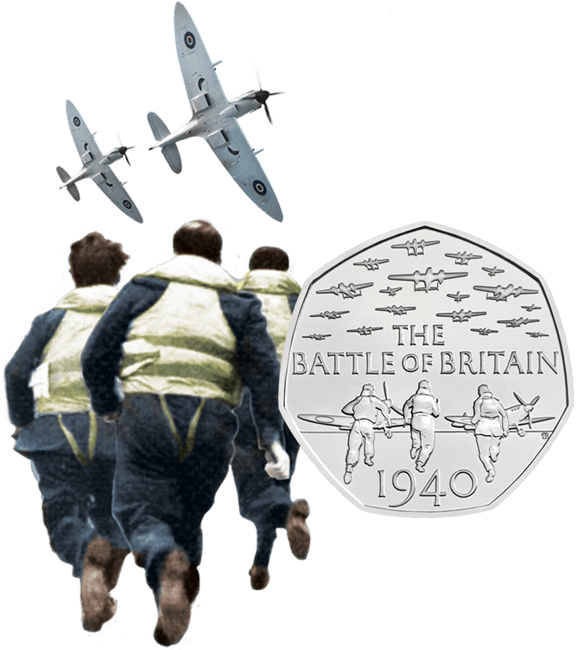

The 75th Anniversary of the Battle of Britain
Throughout 1939 and 1940, the German blitzkrieg swept through Western Europe. Troops and armoured vehicles directed by radios waged lightning war. With no answer to these short concentrated attacks, countries fell like dominoes one after the other.
After the fall of France, Britain was next in Hitler’s sights. But the Royal Air Force (RAF) defied Goering’s Luftwaffe to stave off the immediate threat. Without control of the skies, Hitler was unable to launch his planned seaborne invasion – Operation Sea Lion. The first German defeat of the war would prove to be a crucial turning point.
Making good use of the world’s best radar network, unrivalled Spitfire fighter planes and squadrons of pilots supplemented by Eastern European airmen who had escaped the Nazi scourge, Britain took the fight to Germany – aided and abetted by a key tactical mistake. Provoked by the British bombing of German cities, Hitler switched his focus from strategic to civilian targets, allowing the RAF time to recover and ultimately win the battle.
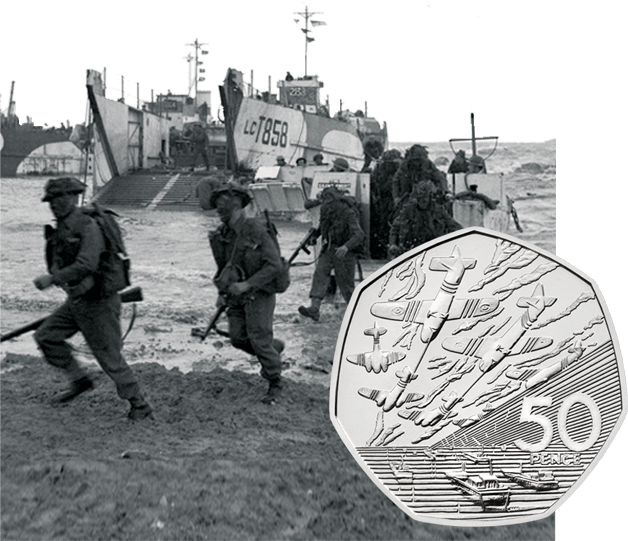
The 50th Anniversary of the D-Day Landings
In a bid to turn the tide of the Second World War and defeat Nazi Germany, the Allies conceived D-Day, the largest amphibious assault in military history. Setting out under cover of darkness, Allied forces stormed five Normandy beaches codenamed: Utah, Omaha, Gold, Juno and Sword in a bid to break through a series of defences known as the ‘Atlantic Wall’. By establishing a foothold on mainland Europe for the first time since 1940, they could open a second front.
On 6 June 1944, three airborne divisions were dropped under cover of darkness to secure the flanks, followed by preliminary bombardments at first light before the first troops came ashore. By nightfall, the beachheads were secured, albeit at a cost of around 10,000 casualties, but this was only the beginning of the battle to liberate France, and months of heavy fighting followed.

The 50th Anniversary of the D-Day Landings
In a bid to turn the tide of the Second World War and defeat Nazi Germany, the Allies conceived D-Day, the largest amphibious assault in military history. Setting out under cover of darkness, Allied forces stormed five Normandy beaches codenamed: Utah, Omaha, Gold, Juno and Sword in a bid to break through a series of defences known as the ‘Atlantic Wall’. By establishing a foothold on mainland Europe for the first time since 1940, they could open a second front.
On 6 June 1944, three airborne divisions were dropped under cover of darkness to secure the flanks, followed by preliminary bombardments at first light before the first troops came ashore. By nightfall, the beachheads were secured, albeit at a cost of around 10,000 casualties, but this was only the beginning of the battle to liberate France, and months of heavy fighting followed.
Be Inspired

THE MOST COLLECTED COIN DENOMINATION
Shop 50p Coins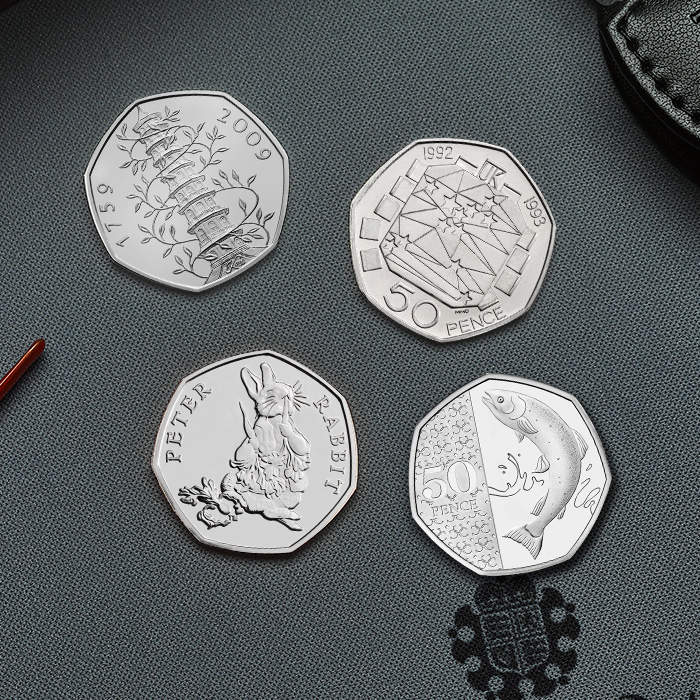
The Rarest 50p Coins
Is this in your change?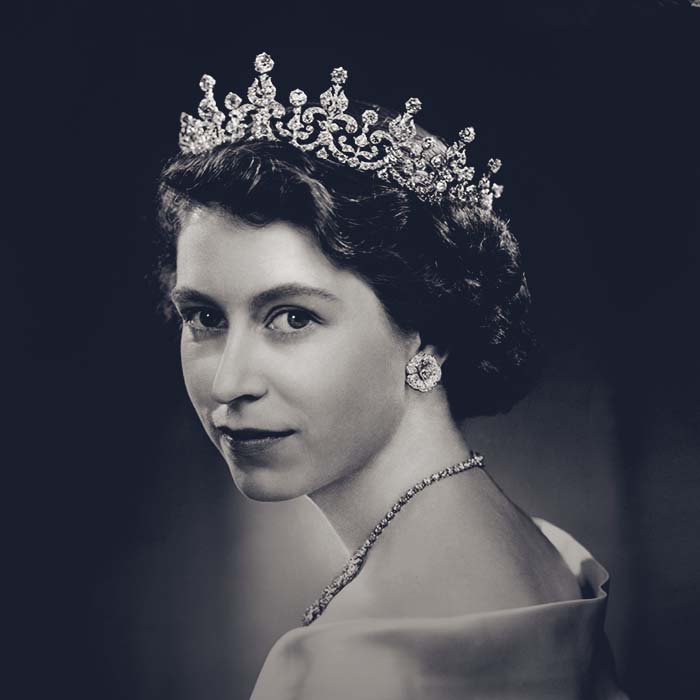
Monarchs on Coins
Kickstart your Collection
